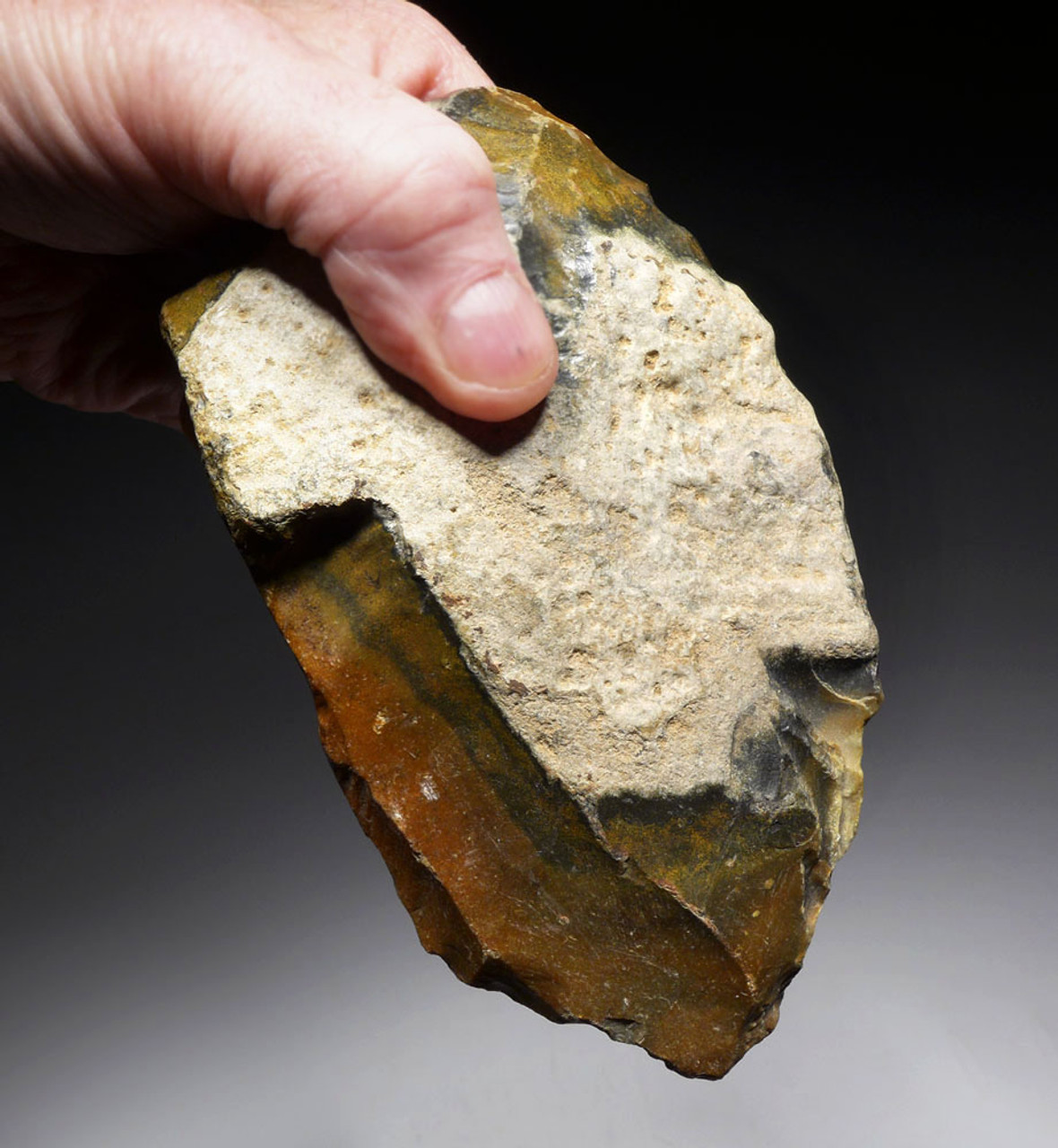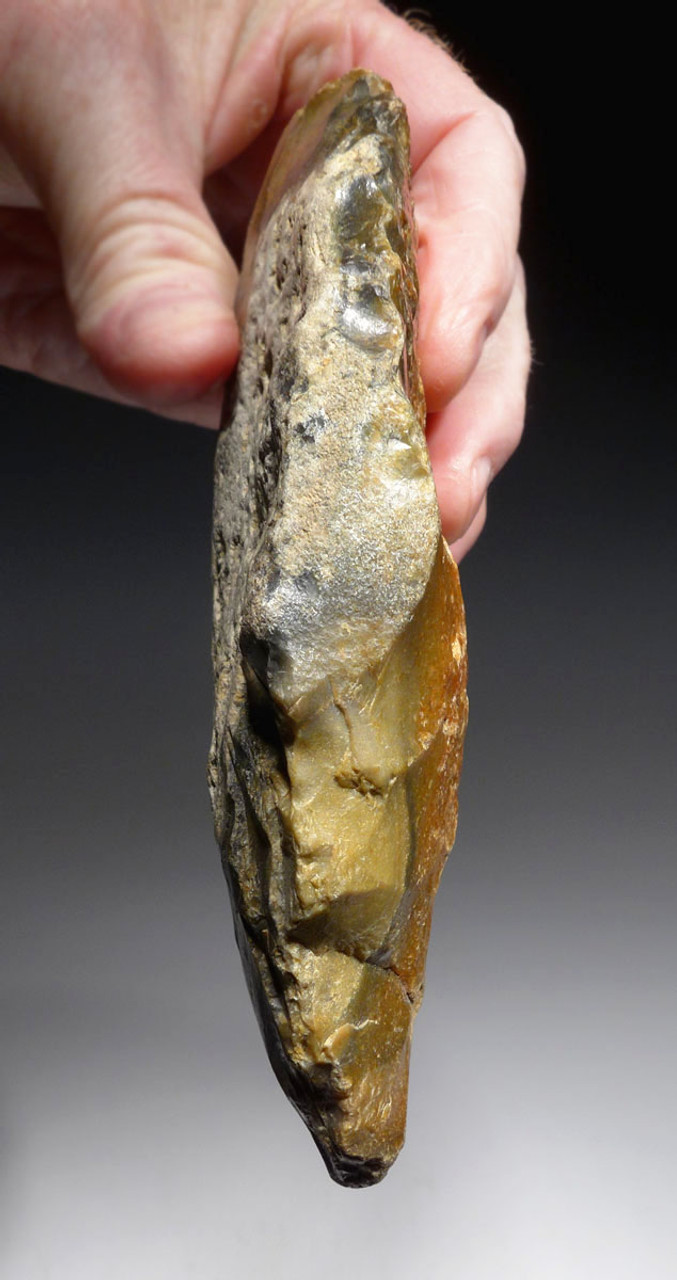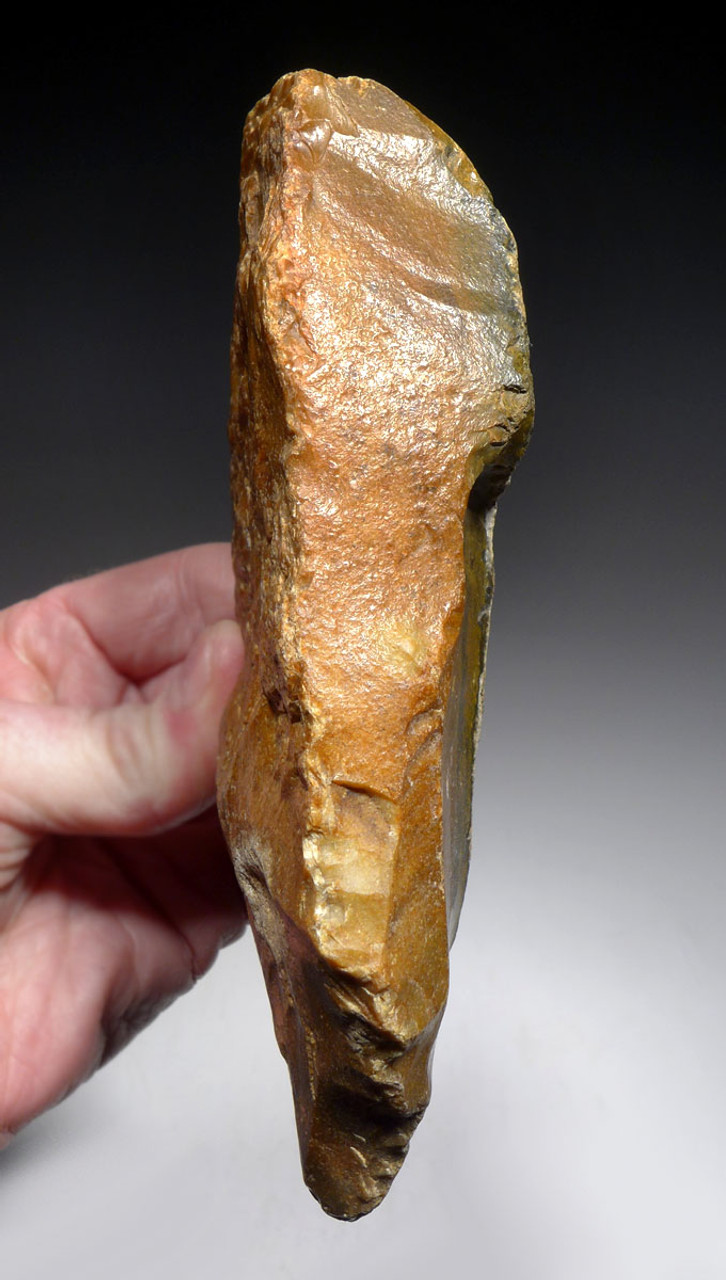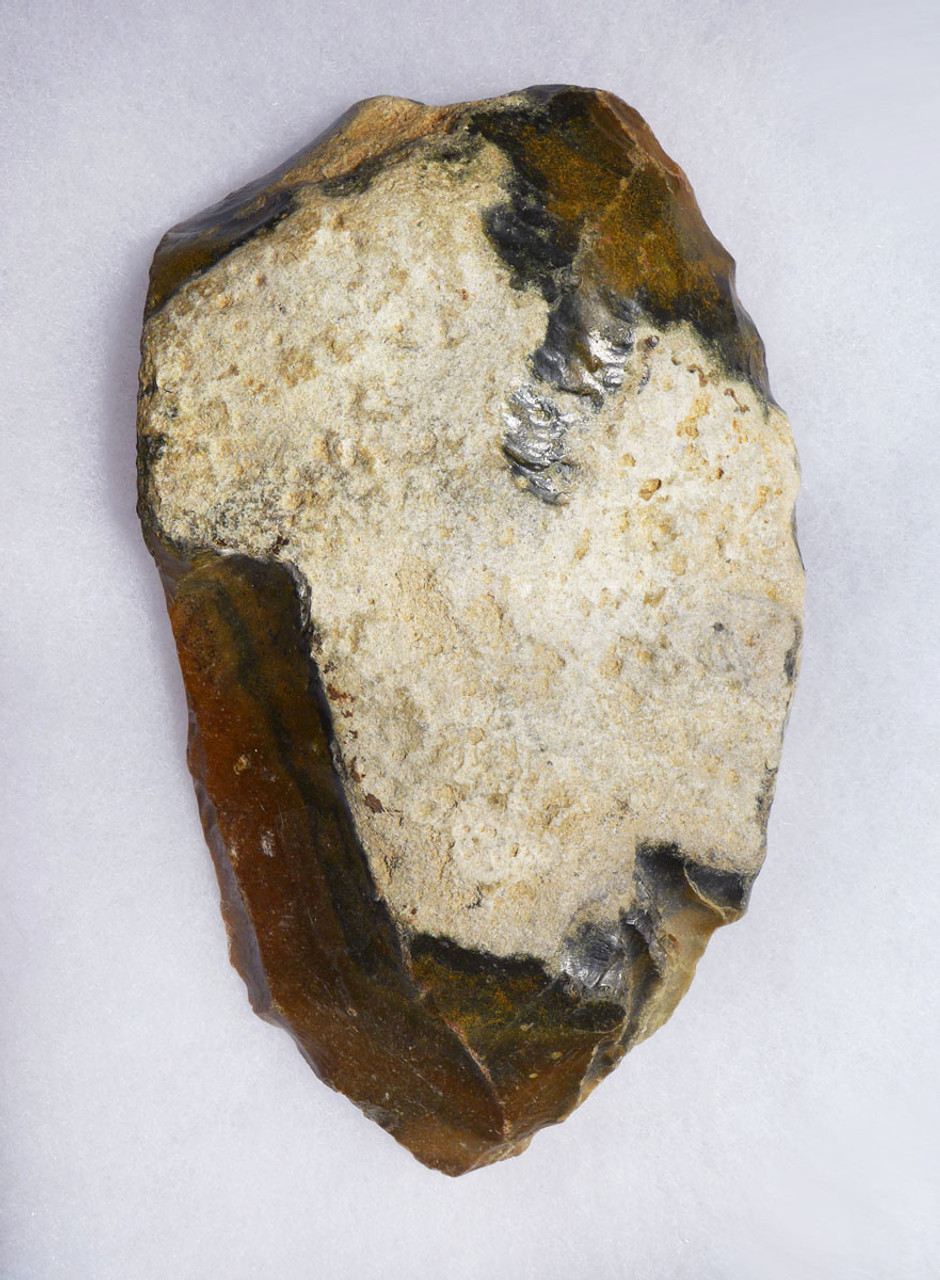Product Description
For comparison prices, please see the "Old World Typology and Price Guide" section of the "OVERSTREET IDENTIFICATION AND PRICE GUIDE TO INDIAN ARROWHEADS" editions 7th, 8th and 9th.
SEE MORE LOWER PALEOLITHIC ACHEULEAN STONE ARTIFACTS
This large and colorful European Acheulean hand axe was made of tabular flint and fashioned by Homo erectus (H. heidelbergensis), the first humans to occupy Europe. It dates back to the Lower Paleolithic Period, made in the Acheulean Tradition, and was the predominant tool technology of the Homo erectus people in Europe from 1 million years ago to possibly as recent as 130,000 years ago.
Uniquely designed to where the natural surfaces of the tabular flint were retained to ensure a firm, slip-proof grip when held, this ingeniously designed hand axe was made of richly-colored flint that is known from the Aisne region of France. One side of the hand axe shows a large area of the original white cortex outer natural layer of the flint. The other side shows a naturally rough surface left by splitting the flint layer. Expert flaking runs around most the perimeter with a natural flat surface on the back edge kept to aid in the grip, as well. An unbroken, original chopping tip is still intact with heavy prehistoric use wear. A heavy natural soil sheen dominates the flint surface as a result of hundreds of thousands of years being buried. This substantial hand axe would have been high effective in butchering typical hunted Ice Age large game animals of the day such as mammoth, bison, horse, and rhino. Without ANY modern damage and in the FINEST CONDITION AS ORIGINALLY MADE IN PREHISTORY!
From a very old former French collection. Today, digging for new specimens is forbidden and has been for decades with most of the best pieces being found in the first half of the last century. Finding an exquisite piece like this ONLY comes from coveted old collections in Europe and hand axes like this usually move from one collection to the next in private collector circles, rarely making it out of the country. Very highly recommended! No Paleolithic collection should be without representative tools of Europe's first humans!
Fine quality European Acheulean tools are far more rare than their Saharan counterparts and often move from one private collection to the next as many sites are now destroyed, built over or protected. In the past decades, European auctions have routinely set records for the highest prices realized on spectacular examples of Prehistoric European stone tools like this. Finest grade specimens are so few in number while the buyer market continues to expand and chase after the best material with no apparent price ceiling in sight. Nevertheless, the prices STILL, are a paltry comparison to much of the more mature rare collectibles on the market and Paleolithic artifact prices still really don't reflect the substantially higher rarity of these artifacts. As ever-increasing buyer demand continues to pursue the best pieces, the actual number of this material is sobering and we are likely to see prices easily rise ten-fold on top-grade specimens, in the next several years. The words "undervalued" and "collectible" are seldom found together in today's world but the realm of European and African Paleolithic artifacts is one where you can still find an emerging market and one of the greatest promises for future investment.
WARNING: This specimen possesses a fine prehistoric patina and mineral deposits deep in all ancient hinge fractures. There is no modern crushing or flaking. Such traits are missing in the fake and altered tools being passed off as genuine tools by fraudulent and/or uninformed dealers selling in auctions, online, at shops and shows. The market is currently awash in fakes and ancient debris shards sold as genuine Paleolithic tools. Make sure you get a WRITTEN unconditional certificate of authenticity as we provide with every purchase, and know your dealer is knowledgeable AND informed.
 US DOLLAR
US DOLLAR
 EURO
EURO
 AUSTRALIAN DOLLAR
AUSTRALIAN DOLLAR
 CANADIAN DOLLAR
CANADIAN DOLLAR
 POUND STERLING
POUND STERLING
























